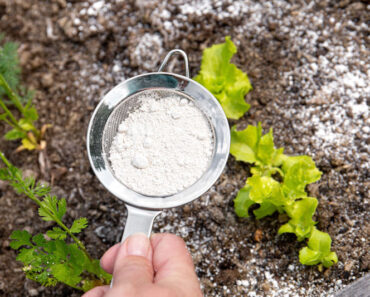The number of American adults who take medications for chronic medical problems is truly frightening. According to the latest statistics I’ve seen, the percentage of the adult population who take at least one prescription medicine every day, for some chronic condition they have, has reached 70%, reflecting a 14% increase in the last three years, the highest percentage ever reported. Sadly, much of that is for conditions which can be avoidable, such as diabetes, hypertension and other weight-induced chronic conditions.
This is truly scary from a survival point of view. We don’t really include medications as one of our top survival priorities, but maybe we should. What will happen to all those people, when there’s a serious, long-term disaster, which keeps them from being able to get their medications?
William Forstchen dealt with this in his best-selling book, “One Second After.” Both the character’s father-in-law and his youngest daughter needed prescription drugs to survive, with the daughter needing insulin to deal with her Type 1 Diabetes. Since insulin needs to be kept refrigerated, even his attempts to get medicine and keep it for his daughter failed, with her supply of insulin losing its potency even before it ran out. Is this what’s doomed to happen to many of us, should a TEOTWAWKI event occur?
Improve Your Health
The starting point for any of us is to make an honest evaluation of our current health. We need to determine if this is much of an issue for us or not. I don’t think there’s anyone who can totally ignore their health, when it comes to survival, as even the healthiest amongst us can become injured during a time of crisis.
We want to ensure our health is as good as possible, before that time of crisis comes. That may mean losing weight, starting to exercise, changing your diet, seeing the doctor, getting surgery or a host of other things. Each area of our lives, which have a potential to be a problem during and after a disaster needs to be dealt with, reducing the potential impact as much as possible.
That will likely take some time, as losing weight or bringing down your blood pressure aren’t things that happen overnight. You may never fully succeed, but even a partial victory is worthwhile, as it will help you survive in a time when you can’t get your medicine.
Stockpile Meds
The next step is adding the necessary medications to your stockpile. You should already have over-the-counter medicines in there, as part of your first-aid supplies. But do you have enough? If you’re thinking long-term survival, you might need a lot more than you already have. Look for a sale somewhere and stock up.
Other than over-the-counter medicines and any medicines that family members take for chronic conditions, the most important medicines to have on-hand are antibiotics. We use antibiotics for a variety of things, ranging from disease to injury-related infection. Most will treat a variety of different conditions, with a lot of overlap between the ways we can use the various antibiotics on the market. The problem is getting them.
By the way, most medicines last considerably longer than the expiration date on the package. Other than a few things, like insulin, which require refrigeration, they don’t actually know how long most medicines will last. How they are stored is an important factor; but all antibiotics and medicines in pill form will last for at least a couple of years past the expiration date. Liquids or gel-caps won’t last as long, so try to get all your prescription medications and even over-the-counter meds for survival in pill form.
Talk to Your Doctor
Your first source for stockpiling prescription medicines is your family doctor. Talk to them about what you want to do and why. Most doctors will be understanding and work with you, even if they don’t work with you to the point you want them to. In other words, they might be willing to write you a prescription for three months extra of medications, even if they aren’t willing to write you one for a year’s worth. A lot of that is going to be associated with just how stable your medical regimen is.
Doctors also receive samples from pharmaceutical companies and may be willing to share those with you. Each package will probably only provide enough for one or two doses, but at least it will be free. If you have a really good relationship with your doctor and they’re not the kind to normally give away those samples, they might be able to give you quite a bit.
Getting that prescription isn’t usually as big a problem as getting it filled. Most insurance companies are very particular about how much they will cover and won’t pay for anything over and above what you need for daily consumption. You’ll probably have to pay for those extra medicines yourself.
One thing to consider is just what medications you are taking. Doctors will generally prescribe the latest and greatest, as those are supposedly better. However, in many cases, there are less-expensive alternatives, which have been around for years. An option to discuss with your doctor is asking for a lower-cost alternative drug for whatever condition you have, just for your stockpile.
Buy Online
One good way of saving money on buying those medications yourself is to buy them online. There are a number of online pharmacies that have sprung up, offering to provide medications at a reduced rate. Some also provide you with the prescription, supposedly written by a doctor they have on staff. Take care when using these services, as they are not all above board. They could be providing nothing more than placebos and charging you for them. Check out the specific pharmacy, before ordering from them.
Mark Cuban, of Shark Tank fame has opened up his own discount online pharmacy which was created with the intent of helping people deal with the high cost of medicines. They don’t carry all the latest, high-cost drugs; but rather the old standbys. They’ll show you the normal retail price for those drugs right there on their website, alongside their price. One thing though; you’ve got to have a prescription, as they don’t have a doctor on staff to write them.
Another recent addition to the online marketplace is Jase Medical. These people seem to have set their website up especially for preppers. They offer two basic services: creating a custom emergency pack of prescription medications to meet your needs during an emergency and creating a custom emergency pack of antibiotics to keep on-hand for any emergency.
Buy in Mexico
Perhaps the best place to buy prescription medicines is in Mexico. I can personally attest that the Mexican pharmaceutical industry is excellent, as I have used their products for years. You’re not going to find the latest medicines there, as those are still protected by patent. But for all the older “standard” medicines, they’re a great source.
Most of these can be bought over-the-counter, in the pharmacy, without a prescription. That includes antibiotics, which require a prescription here in the United States. There, many of the more common antibiotics are available in 100 pill bottles, at very reasonable prices.
There are some exceptions though. Narcotics and any mind-altering drugs still require a prescription. You would also need to have a prescription to bring those medicines back across the border though. While our customs doesn’t say much about bringing back antibiotics, blood pressure medicine and other common pharmaceuticals, there is a list of prohibited medications which you can’t bring into the country without a prescription.
If you’re going to buy antibiotics like this, I’d recommend taking some time to do some research online, checking with reputable medical websites, to find out what the various antibiotics should be used for and what the proper dosage is. That information is readily available online, but it might not be available during a time when the power is out. Therefore, it is worthwhile taking the time to develop your own reference sheet, from the information that you find on those medical websites.
Prepare to Use Alternatives
Another source for antibiotics is the veterinary industry. Many common antibiotics are packaged for veterinary use as well as for human. These are usually the same antibiotics, made on the same production line, but sold under a different name. I’m not going to provide you with the names here, for liability reasons, but they aren’t hard to find. Just make sure you know what you’re getting, what it is the equivalent of and how you should be using it.
The other alternative that everyone should consider is herbal medicine. Our modern pharmaceutical industry got its start with herbal medicines. Even today, many of the medicines they produce are actually things they find in nature, then develop a way of producing artificially. They have to do that, because they can’t patent something found in nature.
Nature herself provides us with a lot of medicines, if we take the time to learn what they are. There are a lot of books available on this, as well as some extensive websites. These herbs can be taken in a number of different ways, such as drying them and putting them in capsules, making teas out of them or even making your own essential oils. The key is learning what herbs can be used for what conditions. They are usually taken in combinations, so that you can gain the benefit from several of them. During the COVID-19 pandemic, I was taking garlic every day, because garlic is a natural antibacterial, antiviral and antifungal. Since antibiotics don’t work against viruses, I wanted the garlic for its antiviral capability.




























